Two Companies Make One
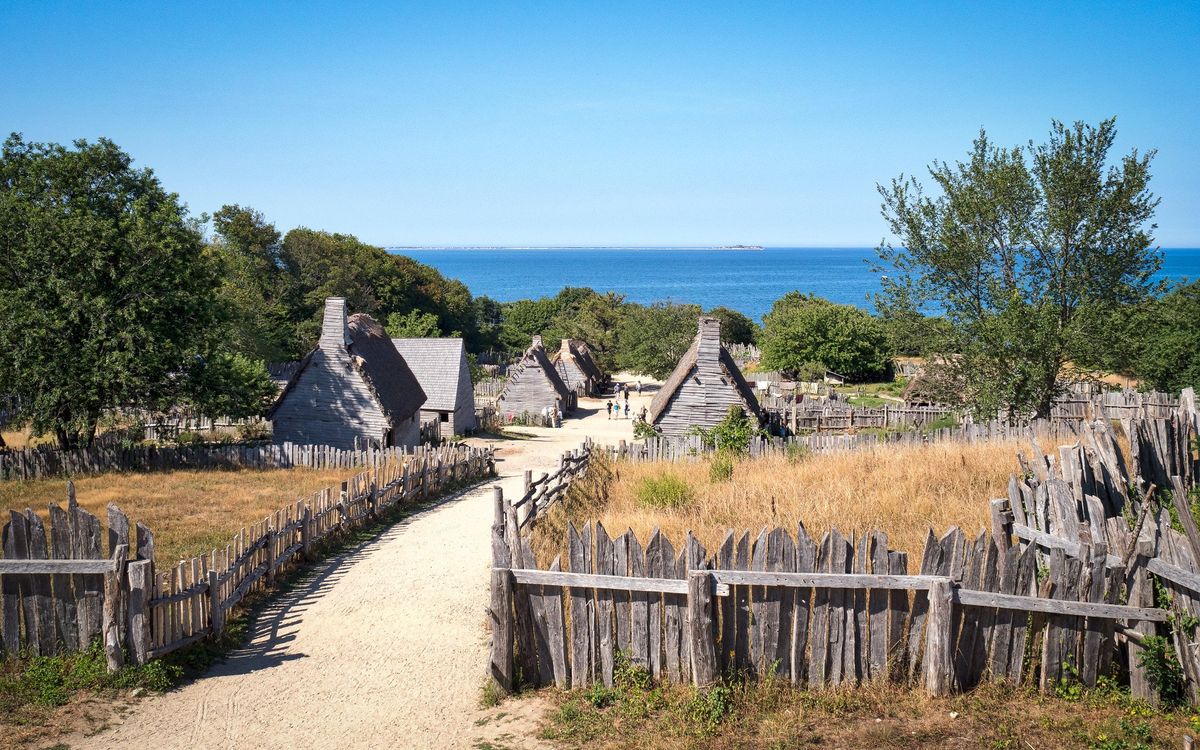
Young William Chandler, our future Tavern owner, is a part of a new household through the marriage of his mother, Annis to John Dane. The Danes moved with their young children (her 5 and his three children) to Ipswich to “sit under” preacher John Norton’s Company.[1].
New towns formed through the use of a Company, typically formed in England. A minister gathers a group together of various skills with the purpose of opening a new town. Andover was unlike most towns as it is founded by two companies coming together to start the town. This simple joining of the two companies from different parts of England, with personality, economic and ethnic differences will have a profound impact on the long-term development of Andover. Today, we talk about people from different families or ethnicity, and how they see the world differently – well 17th C. was no different and through necessity, Andover from the beginning faced the differences head on – and I would argue to its benefit.
John Norton was a noted Puritan preacher in Bishop’s Stortford in the county of Hertfordshire. Hertfordshire, England was home to both the Chandlers and Danes, so even though they did not cross the Atlantic with Norton, they knew Norton prior to moving to Ipswich. Norton arrived in Ipswich in 1639, two years after the Chandlers/Danes, to be Ward’s assistant. As soon as he arrived, he began to gather his group and the Danes (and Chandlers) were incorporated into Mr. Ward’s Company. [Ward was a minister who formed a company located in Ipswich, and was scheduled to move to Andover, but ultimately moved to Haverhill instead.
Ipswich was founded by John Winthrop the younger son of John Winthrop, one of the founders of the Massachusetts Bay Colony in 1630 and its first governor, elected in England in 1629. Several hundred colonists sailed from England in 1630 in a fleet of 11 ships, including Winthrop's flagship, the Arbella. Ipswich is obviously started by many upper-class Englishmen. One such elite citizen, Simon Bradstreet is one of the founding fathers of Ipswich and Andover and future governor of Massachusetts Bay. Simon Bradstreet, as in Andover, has his home next to the minister, a place of importance. Bradstreet with important ties to Governor Dudley, is highly respected in this community and always referred to as mister. This early introduction to Simon Bradstreet and his family impacts the Chandlers and the Danes throughout their lives – and saves the future tavern from losing its license.
The second "half" of the company to form Andover was from Newbury – a neighboring town -- which was started in 1635. The settlers of Newbury were loyal English tradesman looking to establish a profitable business with many from Ipswich – having left for more like-minded neighbors. Those who settled Newbury came at different times and on different ships, between April 1634 and July 1635. It is believed Thomas Parker was responsible for naming of the new town as he had taught school in Newbury, Berkshire, England before immigration. This town is occupied by more business and trade minded folks, while the Ipswich citizens collect around a minister, with humble means. There are exceptions to this characterization, but it captures the tone of the two towns and the joining into one company.
MOVE TO ANDOVER & INTERNATIONAL TRADE
Andover, or “Cochichewick” as it was called, was founded in 1643 around Great Pond. The location was ideal fishing and hunting as it was already a favorite of the native Indian population. It also possessed large rivers to the Atlantic, and numerous small rivers and streams needed for mills. Since roadways would take some time to build, these rivers, especially the Merrimack River, provide a means for shipping goods. Andover was rich with forests for lumber, clay pits for bricks, and fertile soil for farming. In fact, it was not long before settlers were in better health than those they left in England.
Even from the beginning drinks played a significant part of Andover history. It is Faulkner family tradition that Edmond Faulkner gave rum to the Indians as part of the negotiations to buy Andover in 1643. If true, this would be a very early time for rum. Even by this early date, Barbados is a trading partner for sugar and molasses with the Colonies, but rum is a by-product of molasses and really took off about 1650.
The first real settler is Richard Burke who was deeded land in Cochichewick (soon to be called Andover) on August 13, 1643[2]. Many argue that plans to occupy Andover started earlier than 1643 -maybe over 10 years earlier. This makes sense as who would settle into any new home without checking it out and making sure you could survive? Over the next couple of years, Barker was joined by Simon Bradstreet (from Ipswich), John Woodbridge (the minister), and others, including the Chandlers.
These early years of 1643 through 1645 were years of great clearing land and building. Richard Burke’s deed of August 1643 only relates to the filing date, and he was likely in Andover prior to August. We can surmise that clearing the land, digging a foundation would be first order of business along with gathering resources to build a house. Construction happens quickly and by 1644, Simon Bradstreet had a sawmill on Cochichewick River near the Merrimack River – a tributary to the Atlantic running on the north side of Andover. The lumber trade in these early years was a boom, and Andover had trees to harvest. Bradstreet's lumber was used locally but also made its way to the coast for ship building and to Barbados to build the sugar plantations (and in trade for sugar, molasses, and rum).
Faulkner's First Ordinary
Even from the beginning drinks played a significant part of Andover history. As required by the Court, every town needed an Ordinary (tavern). The ordinary was typically located close to a Meetinghouse and was often called a Public House. It was a necessary place to meet before there were town halls. Edmond Faulkner gets the first license for an ordinary. He admitted to selling alcohol to the Indians as part of his negotiations to "procure" Andover – which was against the law -- and it is very likely he did give alcohol to the Indians. Let’s face it, alcohol was about all the settlers drank and if you want to be neighborly, you offer a drink to your guest.
Edmond Faulkner's home was in the northern part of town and over 1-1/2 miles from where William Chandler would build his home and tavern. No records exist about Faulkner's house and its use as a tavern. We can make some assumptions about its look based on what we do know.
Faulkner received 6 acres of land as compared to Bradstreet, who received 20 acres. Simon Bradstreet’s home had a foundation (house does not exist) measuring 35’ x 18’ [5] which would indicate two rooms on the first floor with a central chimney and front entry. The Bradstreet home likely had a second story for a wealthy man. Alternatively, Faulkner would likely have one-room on the first floor and a second room above. Low ceilings, dim lights, small windows, and a fire glowing to highlight the massive timbers used in its construction add to this very small building, 17' x 17' or less. Visiting this ordinary would be crowded with family, neighbors, and a flow of beer.
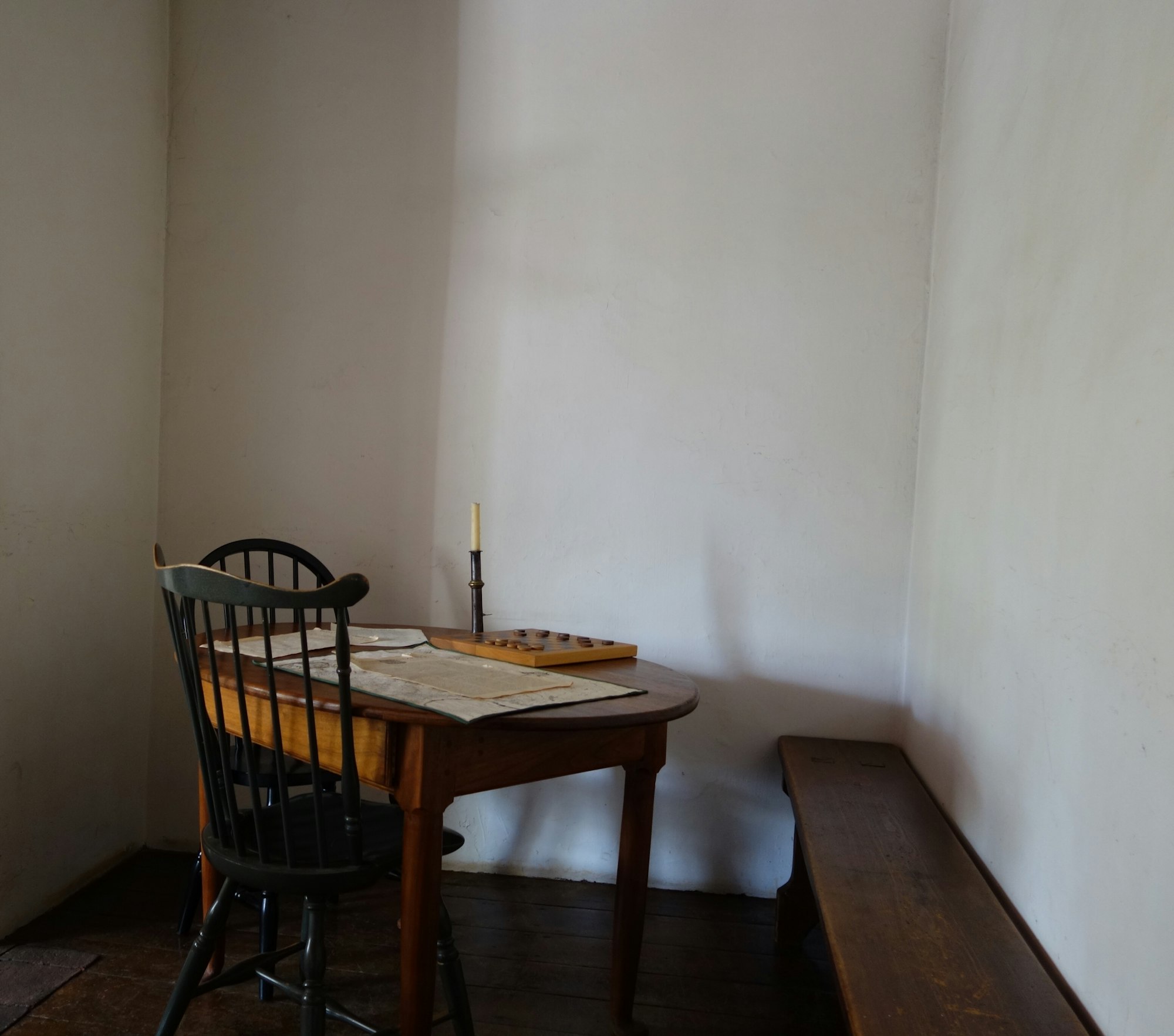
1651 Court Law on Ordinary
Ordinary keepers had a lot of legislation – the license, cost of beer, malt content and alcohol content. In the 1651 Court law it said that a hogshead of beer had to contain six bushels of malt to sell a 3d. a quart; four bushels to sell at 2d., and two bushels to sell at 1d. To maximize profits, keepers would frequently dilute their beer. It seems that not a single brewer in seventeenth century Essex County received a fine for diluting his beer or illegally brewing with Indian corn, oats, or rye[6].
It is not clear what happened to Faulker's ordinary - maybe he was over regulated - but by 1653 Andover is fined for not having an ordinary. To remedy the situation, in 1654, Deacon John Frye, a vintner, is appointed a retailer of strong liquors.[2] A retailer is a term that more aligns to a modern liquor store. The family tradition of Faulkner indicates the selling of rum earlier in Andover, but by 1654, Deacon Frye sold both beer and rum. Andover is already involved in international trade through Simon Bradstreet's trading of lumber in exchange for Barbados' rum, sugar, and molasses. By the late 1650's, Andover has multiple generations of settlers leveraging its resources and ingenuity to build a diverse community immersed in international.
Andover is born and the first tavern has come and gone. William Chandler will begin his tavern in the next episode.
[1] Following Dane’s death, Annis would marry for a third time to John Parmenter. When he died in 1671, he left in his will the use of “my warming pans as long as a widow”. In 1683 when Annis died the church record says “Old widow Permenter a blessed saint”.
[2] Bailey, Sarah Loring. Historical Sketches of Andover, Massachusetts. Boston: Houghton, Mifflin and Company. 1880, pg 66.
[3]Genealogy of Chandler Family by Mrs. A. M. Pickford, Ancestry.com - North America, Family Histories, 1500-2000, pg 1348 - 1351.
[4] Greven, Philip F. Jr. Four Generations: Population, Land, and Family in Colonial Andover, Massachusetts. Ithaca, NY: Cornell University Press. 1970, pg 44.
[5] Roper, Stephen J. A Good In-Land Town: Buildings and Landscapes in North Andover, Massachusetts, from 1640 to 1940. Haverhill, MA: Eagle Offset, Inc. Copyright North Andover Historical Society. 2001.
[6] McWilliams, James E. Brewing Beer in Massachusetts Bay, 1640-1690, The New England Quarterly, Dec. 1998, Vol 71, pg. 543-569.
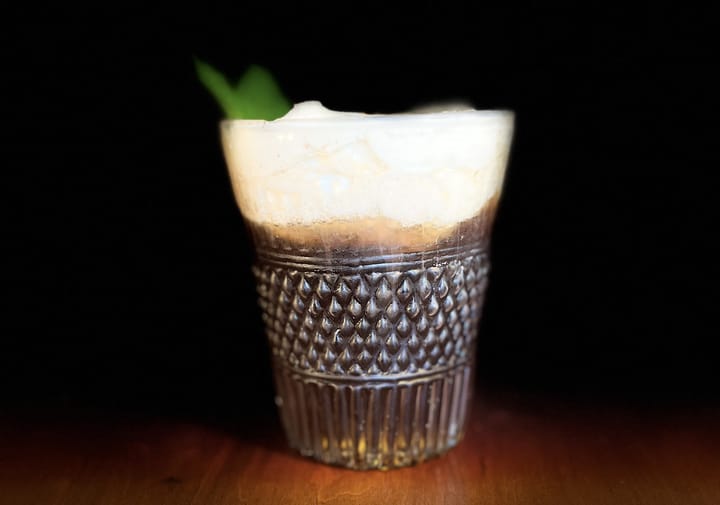
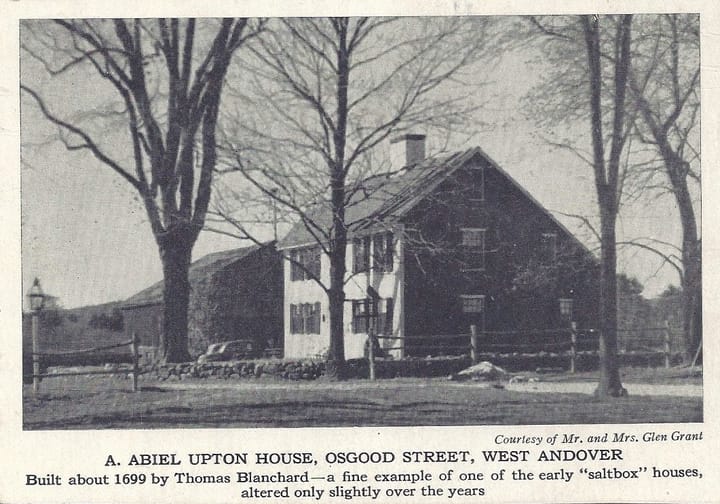
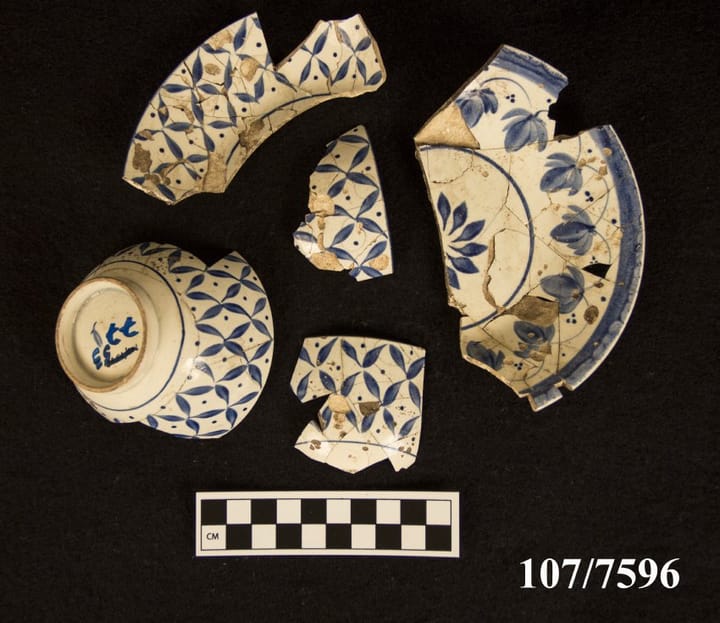
Comments ()